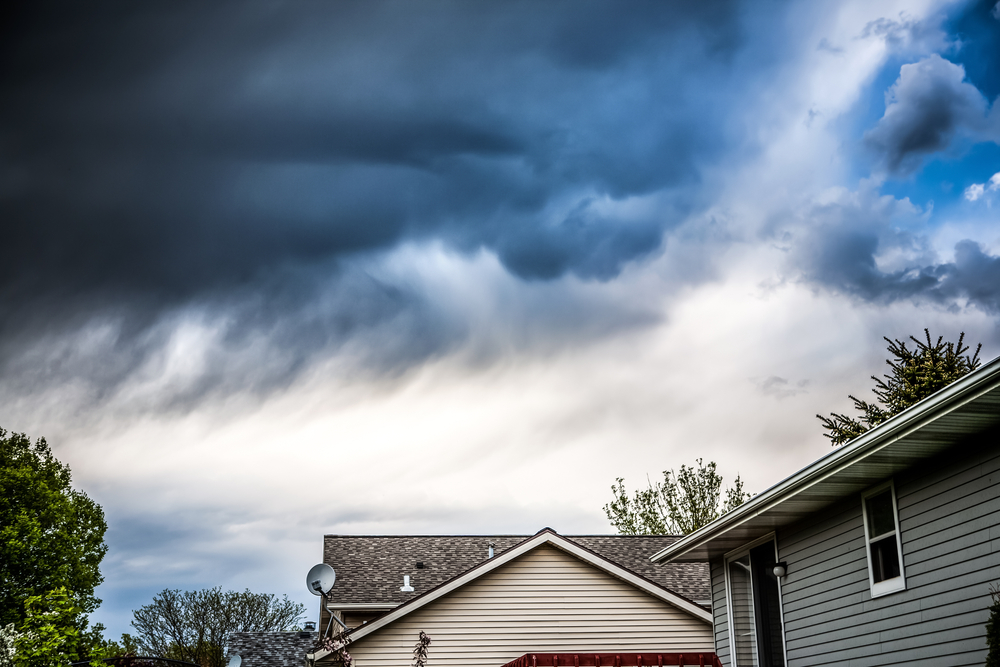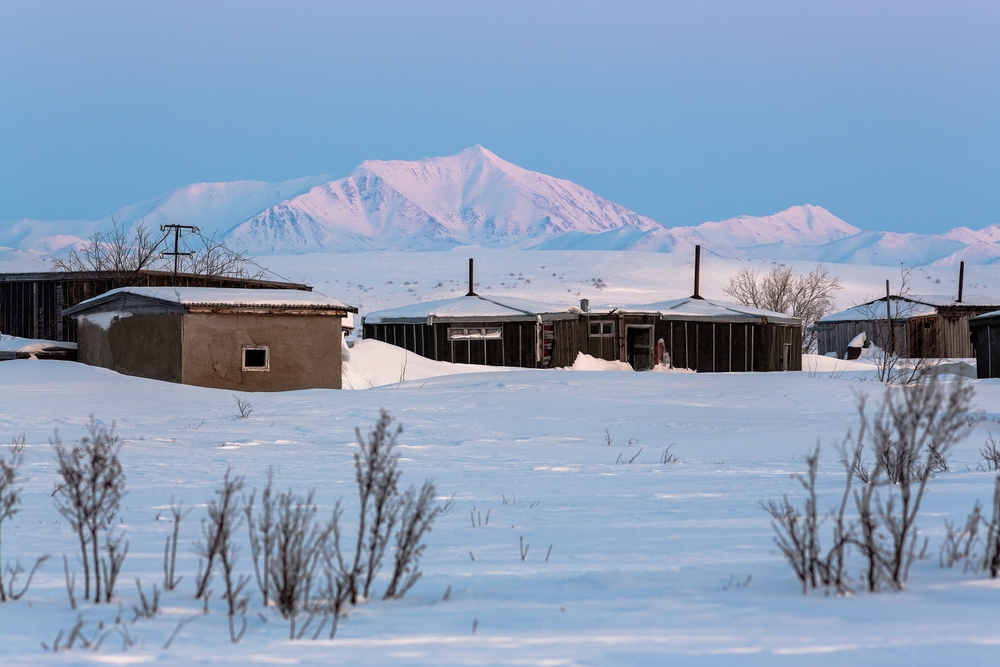How To Prepare Your House for Extreme Weather in Texas
The state of Texas is ranked at the top in frequency, variety, and extent of natural disasters every year. Hurricanes, tornadoes, flooding, wildfires, hail storms, erosion, and drought is a part of the life of Texans.
Introduction
There is hardly a year that goes by without a major disaster event being declared in Texas. The southern tip of “Tornado Alley” extends into the heart of the state, leading to Texas extreme weather and tornadoes throughout the year.
Hurricanes are common in spring and fall (the recent Hurricane Harvey devastated the state) and cause severe damage in the south. On the other hand, extreme temperatures lead to droughts and widespread wildfires are not uncommon in the summer.
However, if you are preparing your house for extreme weather, get in touch with experts to guide you. A Texas real estate license holder practicing in your location, for example, will know what other residents are doing to protect their homes and can share their experiences with you.
You can also be sure that he/she has gone through a real estate course in Texas that has taught about practices to insulate a house from adverse weather and how to advise buyers or sellers in this regard. These topics are typically a part of the process of how to get the real estate license in Texas.
Apart from a Texas real estate license holder, you may also contact home insurance agents for professional advice on preparing your home for extreme weather in Texas.
Understanding the Importance of Preparing Your House for Extreme Weather in Texas
Regardless of whether you are building a home in Texas or have been living in one for years, it is important to prepare your house for any unforeseen natural calamities. Take measures to improve your home’s resilience and ability to withstand adverse weather conditions.
These actions might be adding physical elements like storm shutters or ensuring the protection of important documents from flood waters. Whatever the case might be, it is always better to be prepared first to face stark conditions than to be sorry later.
This post will detail the procedures and recommendations to follow to protect your home and family from the effects of adverse Texas extreme weather.

Key Takeaways
- Assess Your Property
- Identify Potential Vulnerabilities
- Inspect the Roof, Windows, and Doors
- Evaluate the Foundation and Drainage System
- Protect Your Windows and Doors
- Install Storm Shutters or Plywood
- Reinforce Garage Doors
- Seal Gaps and Cracks
- Secure Loose Items
- Remove or Secure Outdoor Furniture and Decorations
- Trim Trees and Branches
- Anchoring Equipment and Machinery
- Prepare an Emergency Kit
- Stock Up on Essential Supplies
- Prepare a First Aid Kit
- Gather Important Documents
Assess Your Property
Identify Potential Vulnerabilities
Do not start with identifying vulnerabilities in your house just after a warning of an impending storm or hurricane. You must find the potential weak points and start strengthening them routinely as a part of home maintenance. Preparing your house for a hurricane, especially in Texas where such natural calamities are quite common, should be an activity that deserves priority.
Not every type of disaster management requires the same type of action. For hurricanes and severe thunderstorms or tornados, the roof, windows, doors, and garage doors should be checked and upgraded. To prevent water damage from flooding or heavy rains, have the roof and the windows properly sealed. Inspect for cracks that might be the cause of large-scale water damage.
The same is the case for wildfire threats, lightning, or power outages. Devise specific solutions to ward off each type of calamity.
Inspect the Roof, Windows, and Doors
A roof that is not secured is the first point of entry for rain and winds. If there is an opening seal it immediately. If the wind finds an opening, it pushes against the house violently, weakening the foundation and structure from all sides.
Leaving the windows and doors defenseless. Rains from a hurricane have great force and travel sideways and can shoot water into your house eight inches through a crack. Check whether the doors and windows close properly and that deadbolts fit snugly into the strike plate.
Also, make sure that your garage door is sturdy enough. Be cautious if you have double car doors as they are very vulnerable to storms and hurricanes. Single garage doors withstand pressure better.
Evaluate the Foundation and the Drainage System
The roof and exterior walls keep water and the weather from entering your home from the sides and the top. These systems dispel water away from themselves to avoid water buildup.
But where does that water go? If steps are not taken to minimize the risk, the water will go into the ground and cause damage to the underground structure and the foundation.
When you assess your house to decide how to prepare your house for a hurricane, check that the drainage system is effective. It should prevent water from building up against the foundation, causing water leaks into the basement or crawl space.

Protect Your Windows and Doors
Install Storm Shutters or Plywood
While focusing on windows and doors, make sure that they close properly and firmly. Water that seeps through cracks and goes undetected for long becomes a breeding ground for molds.
The best way to prevent water pouring in from hurricanes or other forms of Texas extreme weather is to install storm shutters. These can either be prefab or slabs of 5/8 inch plywood.
In case of severe warning of storms and you have some time on your hands to prepare well for it, replace the doors and windows if they are old. Newer doors are built to withstand high-velocity winds and newer windows have impact-resistant glass. When old windows fail from hurricane-force winds, it is one of the primary causes of damage to the interiors.
Reinforce Garage Doors
Reinforcing your garage doors is an important part of preparing your house for a hurricane. Double car doors are often the most vulnerable entry point to your home. If the garage door goes off the hinges, the high winds pressurize the whole house to the extent that you risk the possibility of losing the roof.
To get around this problem, buy a windowless single garage door to stand up to the pressure. If replacing the door is not possible, install bracing on the existing garage door. You can buy kits that provide aluminum braces to attach through the header and mount to the floor.
Seal Gaps and Cracks
Rain driven by strong winds easily makes its way into small cracks around doors and windows. This moisture contributes heavily to subsequent rot and deterioration of the condition of the doors and windows. Moreover, this water over time will damage the interiors too.
While thinking about how to prepare your house for a hurricane, check around the perimeter of your windows and doors to see whether the caulk is in good shape. Any signs of missing or cracked caulk should be replaced on priority to get a sound weatherproof seal. Finally, check the wood to see if it is soft or spongy, a sure sign of rot below the surface.
Sealing gaps and cracks is a critical part of preparing your house for a hurricane in Texas.
Secure Loose Items
Remove or Secure Outdoor Furniture and Decorations
Bring all your furniture together as the weight of all of them together will be hard to be blown around. For example, if you have stackable chairs, put them all in a pile. Use a rope to tie them all together to prevent them from falling apart. You can also tie the bases of all the furniture together.
Move the furniture to one side or against a wall so that it will only move when the wind is blowing in one specific direction. Otherwise, they will stay put where they are.
Decorative items like potted plants, children’s toys, or bikes must be similarly taken care of. Remove the lighter stuff elsewhere such as inside your home or garage. The heavier items can be securely tied together with bungee cords around the sturdiest parts. Secure the ends of the cords to a strong object like a railing, a tree, or a fence.
Trim Trees and Branches
Trimming trees and branches are essential for protection when high winds strike your area. Select branches of trees that are too close to a window or the roof and trim them. Those that are weak and hanging low to the ground will break off easily in moderate winds and damage your house.
Trim branches that are especially long as they tend to snap in high winds. This creates “wounds” on the trees that permanently become weak spots. This problem will not arise if you keep the trees trimmed beforehand. Pay great attention to branches that overhang the roof. They will cause great damage if they snap during a hurricane. It is wise to keep them trimmed to counter a hurricane.
Anchoring Equipment and Machinery
In a typical Texas home, there will be various types of equipment and machinery lying around the lawn. These are BBQs, garbage bins, recycling and trash cans, compost bins, sports equipment, lawnmowers, gardening tools, and more. Each of them can become a dangerous projectile when a hurricane strikes.
At the first warning and hint of a storm, walk around the property and bring whatever you can inside the house or garage. For the others, tie them down with a heavy rope secured to a tree or railing. Do not park your car below street lamps, power lines, or trees. If possible, park in a garage. Do not forget to take down exterior television antennas from the roof.
Prepare an Emergency Kit
Stock Up on Essential Supplies
Stocking up on essential supplies is very important to last out a hurricane. Go about it methodically and break the requirements into categories so as not to miss out on anything.
- Readymade food: Canned fruits, soups, meats, vegetables, juice, pasta, and beans, bread and butter, dry cereals, and fruits should be on top of the list. Allot at least one gallon of drinking water per person for three days.
- Minimal-prep food: Stock up on rice, pasta, seasoning, sauces, and oats.
- Supplies: Essentials include Toilet paper, garbage bags, dish soap, paper towels, plates, and cups, a flashlight, toolkit, rain gear, plastic sheeting, rope, mosquito repellent, a power bank for mobile phones, matchboxes, and cash.
If you have babies with you, do not forget diapers, wipes, baby food formulas, bottles, and rash ointment.
Preparing A First Aid Kit
Every home must have a first aid kit. While deciding on how to prepare your house for a hurricane in Texas, it is an excellent opportunity to put all the essentials together.
Here are some items that should be in your first aid kit.
- Sterile adhesive bandages in assorted sizes
- Hypo-allergenic adhesive tape
- Triangular and roller bandages
- 2- and 4-inch sterile gauze pads about 4 to 6 of each
- Thermometer, antiseptic, cleansing agent
- Scissors, tweezers, needles, latex gloves
- Sunscreen
Apart from these items, carry your regular medicines if applicable.
Gather Important Documents
What are the important documents to keep together while preparing your house for a hurricane?
Here are a few examples
- Personal Records: birth, marriage, divorce, adoption, and death certificates, driver’s license, personal identification documents, Social Security cards
- Property Records: property leases, mortgages, and other title documents of home and auto.
- Card Numbers: Debit and credit card numbers and their helpline phone numbers
- Financial Records: bank statements, safe deposit box keys, pay stubs, and retirement statements
- Medical Records: copies of health insurance cards, prescriptions, and health provider contact information.
Keep all these important records in a safe deposit box or a bolted safe in an interior closet of your home.